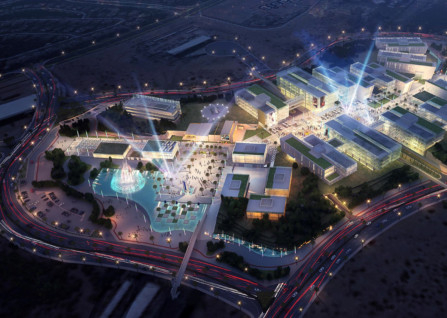
Free zones have been an incredible success story in the UAE and have proven to be a key part of the country’s diversified economic strategy.
Legal structures permitting full foreign ownership of business have encouraged commercial ventures, aided foreign direct investment, fostered entrepreneurialism and created significant employment numbers. Free zones have formed some of the country’s most thriving trading hubs. Locations such as Jebel Ali Free Zone Area, Dubai International Financial Centre, Healthcare City, Media City, Internet City, Dubai Silicon Oasis, twofour54 and Masdar City are today instantly recognisable.
The ethos of successful free zone areas is pro-business, with assistance in helping firms set-up and trade in a tax friendly environment. Advantages generally include 100 per cent foreign ownership, 100 per cent tax exemption, quick approval procedures, full repatriation of capital and profits, and the availability of real estate for sale or lease. Set up options usually include statuses as a Free Zone Establishment (FZE), Free Zone Company (FZCO) or as a branch/representative office of an existing onshore or offshore parent company.
The free zone count across the UAE now includes a total of 27 areas in Dubai, 7 in Abu Dhabi and 11 in the northern emirates – with more to come. The UAE Ministry of Economy states that 33 per cent of the country’s non-oil trade came from free zones in 2014.
The free zone sector has played a vital role in Dubai’s economy, accounting for 32 per cent of its total direct trade, driving about Dh500 billion of commerce in 2015. As of 2015 Dubai was home to 20,000 free zone firms, with 100 Global Fortune 500 companies having opened a presence in Jafza alone. ValuStrat research reveals that 144,000 people are employed in Jafza. Almost another 90,000 workers are based in Tecom operated free zones such as Media City, Internet City, Studio City, Knowledge Village, Academic City and the Design District. Other free zone areas are nurturing a full work-live-play master plan model, such as Dubai Multi Commodities Centre (JLT) and DSO – where over 90,000 and 160,000 people respectively are recorded as either living or employed within their communities.
Dubai has used the concept of free zones very cleverly to focus on specific business sectors such as finance, technology, aviation, media, logistics and healthcare. Clustering of similar business types is widely accepted to help create strong commercial dynamic, with a coherent marketing message delivered by the relevant master authority on behalf of all occupants. The creation of competition between firms, and resultant consumer choice, is seen to benefit both companies and customers alike. Local examples of this strategy include Knowledge Village and Dubai Academic City – where globally accredited universities have been grouped together to build locations around their proven educational brands. A similar approach, with premium medical service providers, is seen in Healthcare City.
Clustering also assists with spatial planning – permitting land use zoning as best fits end user requirements and macro economic policy. Heavy industry is generally located “out of town”, with more urban locations targeted towards “high value” sectors such as technology, media, medicine and education. With consideration also being made of the associated transit requirements, such as employee commutes on private/public transport and shipping of raw materials and manufactured items, a city’s transport infrastructure can also be better planned.
While free zones may currently be tax free, there are certainly not without solid revenue generating opportunities for their respective master authorities and governments. Miscellaneous fees for business set-up, employment visas, trade licenses and other activities provide attractive recurring income streams from a captive market. Also, as seen above many locations grow to become strong real estate microcosms in their own right – creating dynamic sales and leasing markets for both empty development land and built property such as warehouses, offices and residential units. Jafza, DIFC, DMCC (JLT) and DSO are all hugely successful cases in point.
Successful free zones can also directly benefit their neighbouring locations. A positive ripple effect is often seen spread into nearby districts, as increased on-shore companies set-up in adjoining “local ownership” areas. Often these are ancillary service providers and businesses that trade into companies located within the free zone. Examples of such areas would include Dubai Investment Park next door to Jafza, and Business Bay which is convenient to DIFC.
Plans by Dubai, Abu Dhabi and some northern emirates to increase their numbers of free zones is a testament to the success of this model in the UAE and its part in the onward growth of the country.












